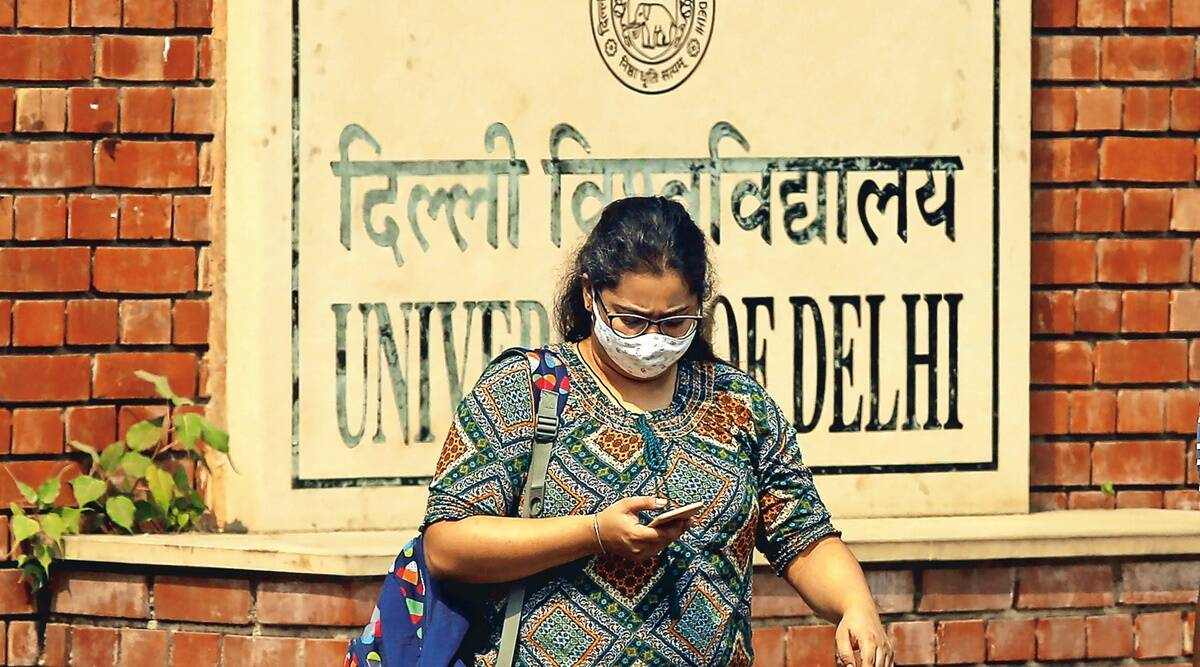 Though the university has not finalised a timeline for the process, registration is likely to remain open for three weeks, according to vice-chancellor Yogesh Singh. (File)
Though the university has not finalised a timeline for the process, registration is likely to remain open for three weeks, according to vice-chancellor Yogesh Singh. (File)Delhi University’s new three-phase undergraduate admission process, based on Common University Entrance Test (CUET) scores, kicked off on Monday with the launch of the university’s Common Seat Allocation System (CSAS) portal where the process will be carried out.
Candidates who have appeared in the CUET and want to study at Delhi University will have to register themselves on the portal, which is now live. This is the first time DU will be following this system, after having done away with its cut-off system for undergraduate admissions and adopting the CUET this year.
In the first phase, candidates will have to submit their personal details and their class XII marks in all subjects. They will also have to upload all their documents and indicate if they want to apply for admissions through the Sports or ECA quota. They will also have to pay their registration fees in this phase – Rs 250 for unreserved, OBC and EWS candidates and Rs 100 for SC, ST and PWD candidates. There will be an additional Rs 100 for applying through the ECA or sports quota.
The second phase, which will begin after the declaration of CUET results, is critical. Here, candidates may select any number of programmes and BA programme combinations in which they wish to take admission, and will have to confirm their programme-specific CUET scores in the selected programmes. In the next step, they will have to fill any number of programme plus college preferences in order for their selected programmes.
The third phase of seat allocation will be based on the programme plus college preferences listed by candidates. A programme group merit list will be created centrally by the university on the basis of which, along with candidates’ categories and availability of seats, candidates will be allotted their highest possible preference.
Candidates will have to accept their allocated seat within a stipulated time period. If a candidate does not accept or act on the offer, they will be removed from the allocation process and will not be able to participate in subsequent rounds of allocation. After a student accepts, the college will either approve or reject the admission based on scrutiny of their eligibility and documents, and if approved, the candidates will move forward to pay their admission fees to confirm the admission. This will close the first round of allocations.
To try and wind up the allocation process as soon as possible, the university will allot more candidates than the sanctioned seats in the first round: 20% extra allocations for each programme in each college will be done for unreserved, OBC and EWS categories and 30% extra allocations will be made for SC, ST and OBC categories.
After this, candidates will be given the option to ‘upgrade’ to try for allocation for a higher submitted programme-college combination. If they are happy with their allocation, they may opt for the ‘freeze’ option. In the next round of allocation, candidates who chose ‘upgrade’ will be allotted a higher preferred combination if seats are available.
Those who choose ‘freeze’ will not be allowed to ‘upgrade’ later. There are likely to be multiple rounds of such allocations.
For the benefit of candidates who might fail to register on the CSAS portal within the stipulated time, the university will open up a ‘mid-entry window’, most probably after the second round of allocations, with a Rs 1,000 registration fee. Dean, Admissions, Haneet Gandhi said that candidates are discouraged from relying on this since they will be considered for allocation only after all the candidates who had applied earlier and have the merit scores higher than the lowest declared score are allocated.